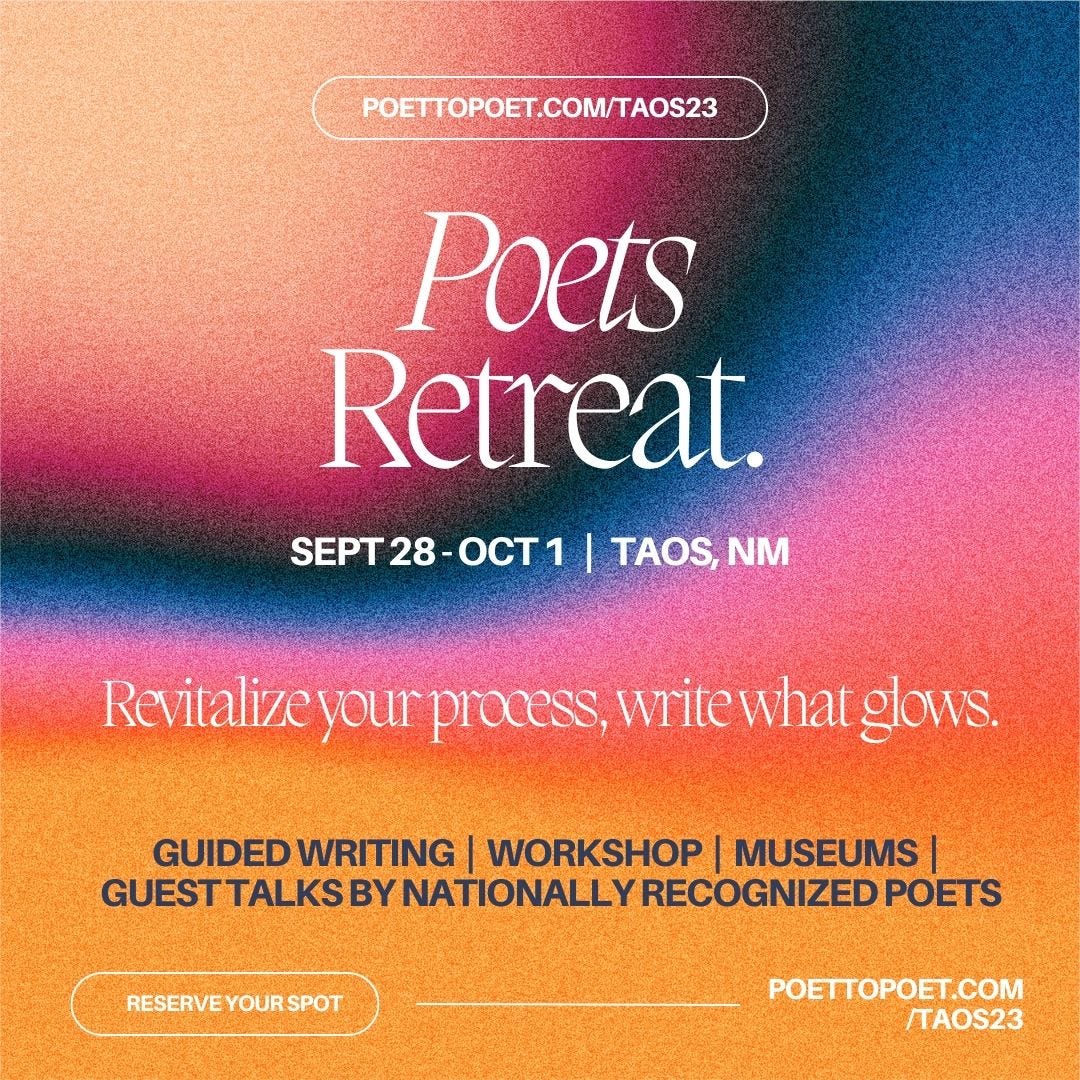Photo by Andrew Moca on Unsplash
Recently, a member of The Poets Circle (Poet to Poet’s member community) sent me a chapbook she hand-produced for a few dozen friends and supporters. I treasure it. Like a limited series of prints, each chapbook is numbered. It’s the perfect vehicle for her ideas, passions, and finesse as a poet.
It also struck me as audacious, a kind of defiant expression made in contradiction of the mainstream, like the zines I loved so much growing up in the 80s and 90s. We could use a little more of that audaciousness right now IMHO.
It got me thinking about audiences, in general, and how we can get tangled up in wrong ideas about the purpose of building an audience.
Considering Audience—Helpful or Harmful?
On one hand, we live in a culture of endless self-marketing in which “audience is everything.” As a marketer, I build audiences for businesses. It’s what I do. The thought of doing that in poetry makes me nauseous.
On the other hand, you’ve probably heard some writer-authority say, “Don’t think about audience, just do the work.” It’s true, in the early stages of work, thinking about audience can damage the process.
But at the right stage, it is very helpful to think about who will read our poems and why. This isn’t narcissistic. It’s informative. It helps us shape the work. Writing has a public aspect and we can embrace that. Period. Otherwise, what reason do we have to consider craft? To aim for ingenuity? To seriously study the effects we create on the page? To … do the work?
If our poems weren’t going to be public at some point, we could just journal our hearts out and leave it at that. Writing well takes so much work. So. Much. Work. That effort takes on meaning when our writing is shared with others. Those others are our audience. There’s nothing wrong with wanting this.
Platforms vs. Micro Audiences
But when I say “audience,” what comes to mind? Fifty people in an auditorium waiting to hear you read from an award-winning collection? A thousand subscribers on your Substack? Ten thousand followers on a social media platform?
Any of those milestones would be amazing, don’t get me wrong. But aiming for a large audience is not only a setup for disappointment, it doesn’t lead to the satisfaction and, more importantly, to the writing longevity we crave. Smaller—even micro—audiences are far more valuable.
We’re more likely to find the feedback, validation, and motivation we seek in more intimate settings, with smaller groups, in more meaningful exchanges like between this writer and the recipients of her chapbook. The power of very small is why I run workshops with no more than five people, and why I lead very small retreats.
One idea we can steal from traditional marketing: Gathering a core group of people around shared interests—and cultivating conversations of some depth—is the best way to build presence. It’s just as true in poetry as it is in brand marketing.
Reciprocity
If you’re not sure how to define your audience, start here: Who pays close attention? Who shares your purpose?
I think we seek those qualities in MFA programs and conferences. It’s certainly possible to find them there. Even so, we can ask: Which relationships have the most synergy? Where is there reciprocity?
To be clear, I’m not suggesting that embracing micro audiences means we put less effort into the work. The chapbook writer I mentioned earlier also publishes on Substack. Print or digital, these are not “vanity projects” for her. They are polished works. She takes her audience’s attention as the gift that it is, and she is serious about her unique voice in the larger conversation that is poetry.
So I’ll end with a confession: I love seeing this newsletter’s subscription numbers rise. I’m thrilled when I’m invited to read at an event. I’m delighted when my work gets published and that published work gets likes on social media. But if those publications and platforms all went away tomorrow I would keep writing for the dozen or so readers in my own micro audience. And if that micro audience shrunk to just a few people (you know who you are), it would still be enough for me to keep writing.
Consider: Is audience really about size? Or is it about reciprocity and the depth of those connections?
How do you think about audience? Share in the comments.
P.S. We’ll be talking more about audiences in The Poets Circle in August (see below).
Upcoming Events / Poet to Poet Community
Fall 2023 Poets Retreat in Taos—only 5 spots left
This fall, join practicing poets for creative renewal in Taos, New Mexico. Enjoy three full days of guided writing, art tours, daily workshops, and guest author talks by nationally recognized poets. Space is limited. Learn more and reserve your spot at the link below.
The Poets Circle: Drop-in Conversations
JULY: Iteration—Toward Completion
July 19, 12-1pm MT
How do you know when a poem or a book is done? What does "complete" mean?
AUGUST: What About Audience?
Aug 2, 6-7pm MT & Aug 16, 12-1pm MT
How much do we consider audience while we're writing? How much should we consider it? Should we consider it at all?






Right on! Your essay is exactly why I started a Substack. As I added prose to my poetry writing and realized I had poetry community, but no idea how to build prose community (and why does genre matter so much anyway?), the idea of going straight to readers felt radical and rewarding both. And yes, as exciting as it is to get a new subscriber, most are people I’m already connected to, many were not poetry readers, and we’ve had some heartfelt conversations sparked by posts (via email, not Substack comments, for the most part). Acclaim is satisfying, but connection is life-giving.
I have had wonderful experiences meeting with book clubs who have read my chapbook, What We Bring Home, a collection of travel poems. Because the groups are small and people know each other, the conversation about the poems is free flowing. In another instance, twenty neighbors and friends gathered at the local bookstore for my reading. Though some had not yet read the book, we talked and laughed and shared many stories sparked by the poems I read. Even with small groups via Zoom, the time together passes swiftly when the group of people gathered know each other. Using a network of friends to reach small groups has been very meaningful to me and, I believe, enjoyable to the participants. I encourage others to try this.